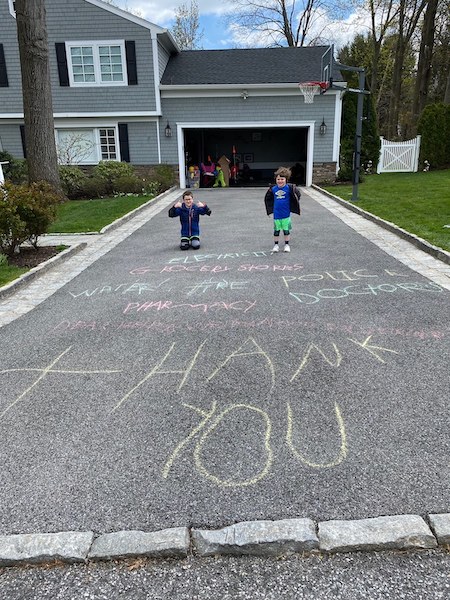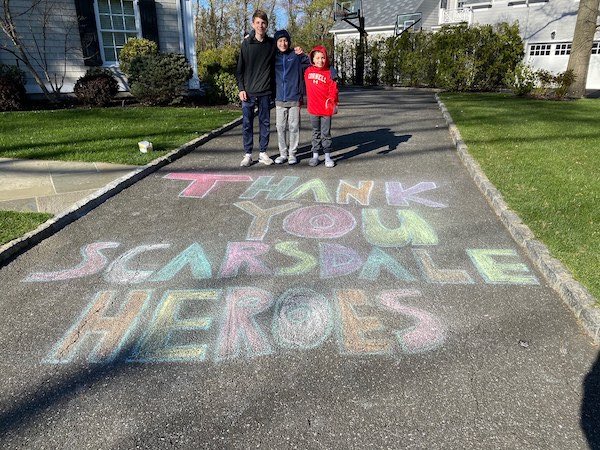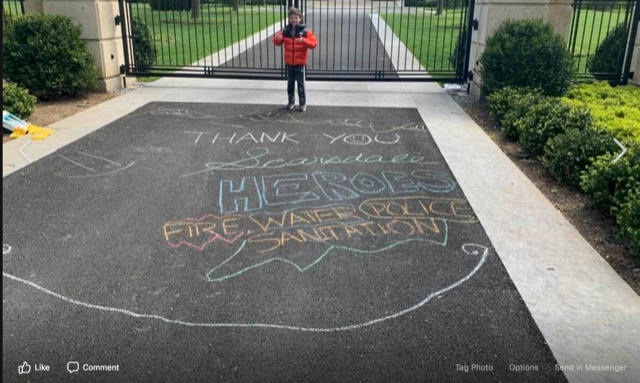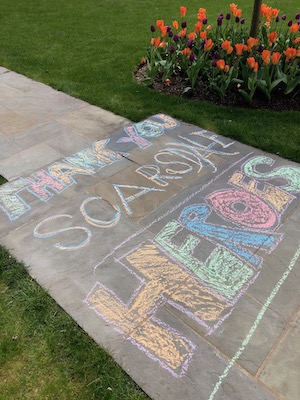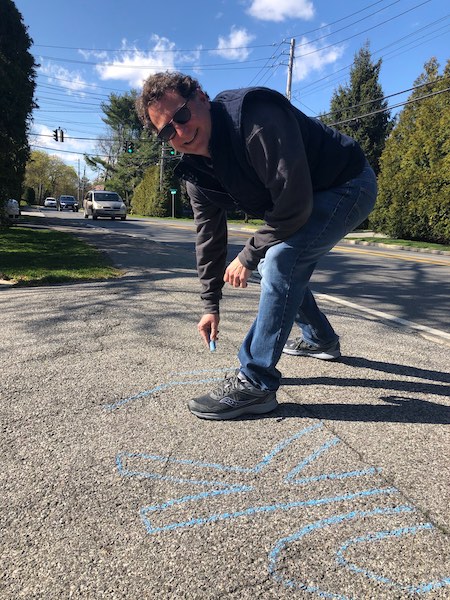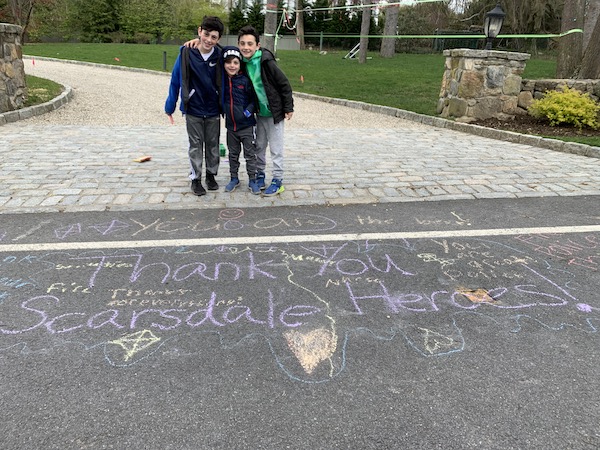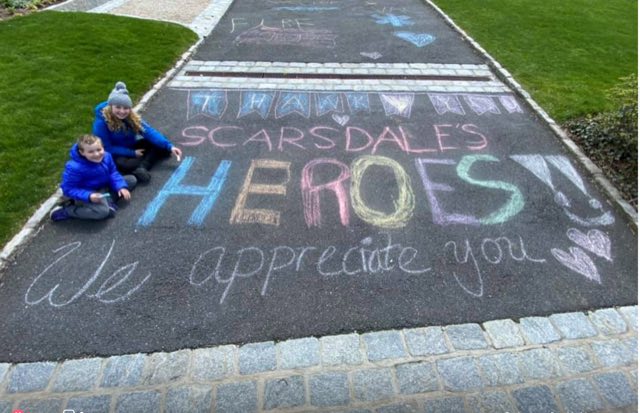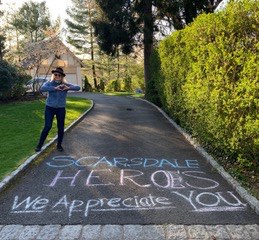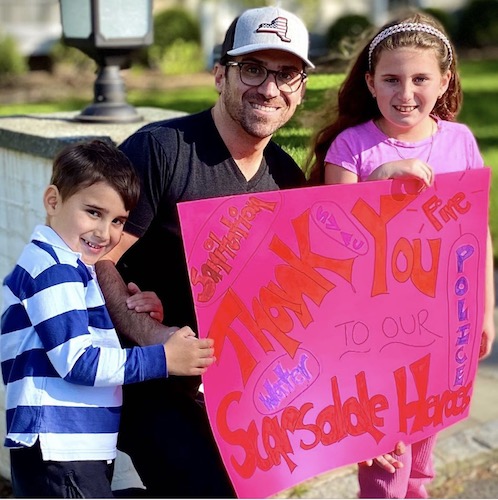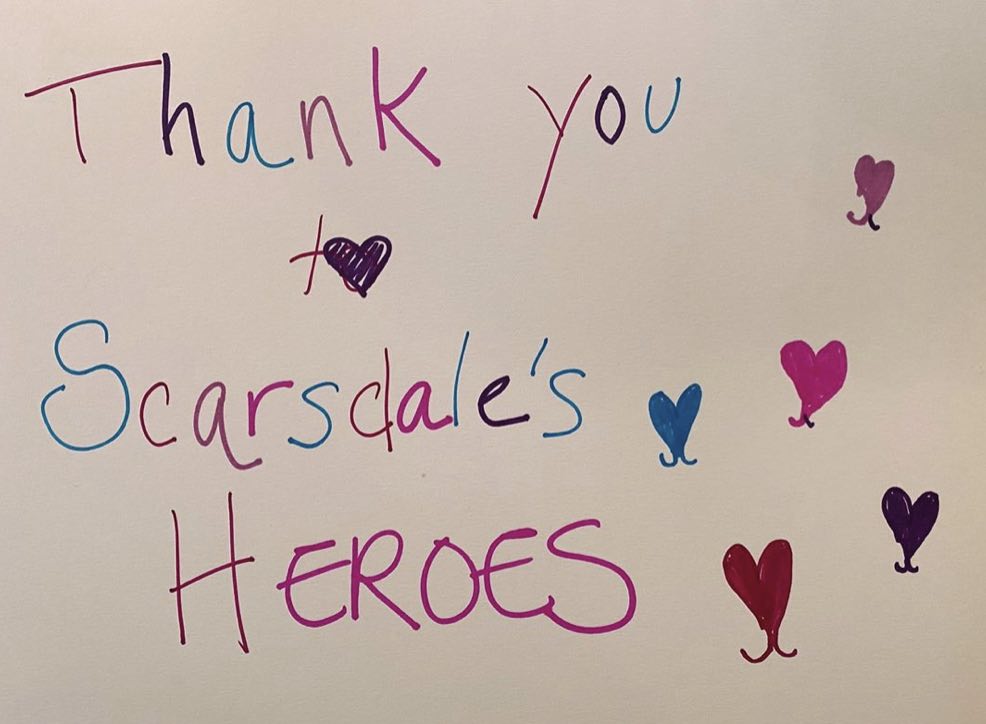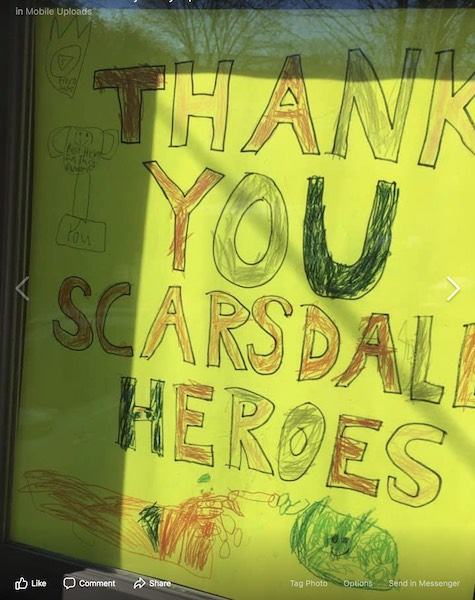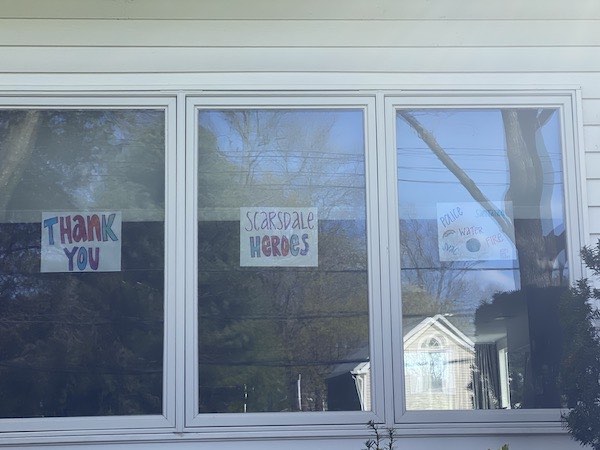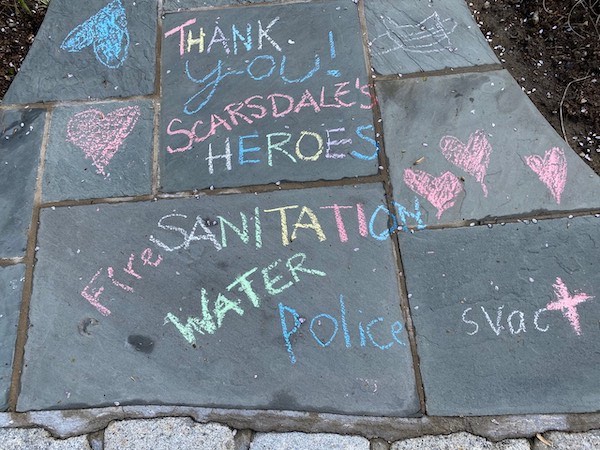High School Students Launch Quarantine Tutors to Provide Free Online Tutoring
- Details
- Written by: Joanne Wallenstein
- Hits: 5818
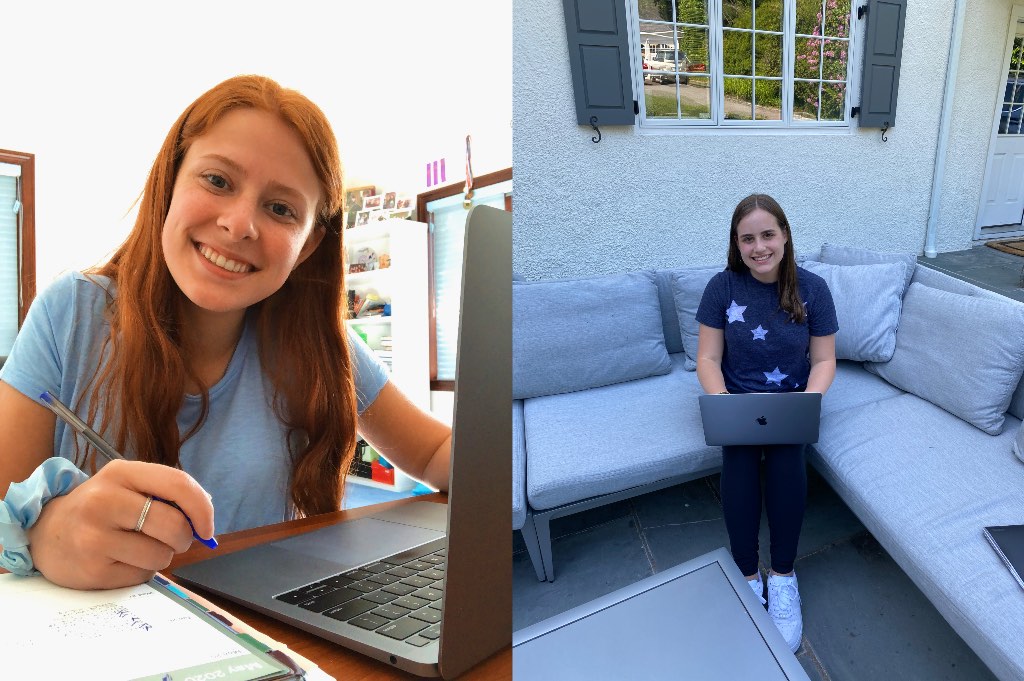 Julia Schnipper and Betsy Harris launched Quarantine Tutors to provide online tutoring to other students.Two enterprising sophomores at Scarsdale High School have launched a new venture to help younger students who are engaged in e-Learning and may be missing one-to-one interaction with their teachers. Julia Schnipper and Betsy Harris founded Quarantine Tutors to offer free remote tutoring sessions, as a way to give back to the world. They have dozens of active students who receive tutoring week after week from their twenty tutors across the country.
Julia Schnipper and Betsy Harris launched Quarantine Tutors to provide online tutoring to other students.Two enterprising sophomores at Scarsdale High School have launched a new venture to help younger students who are engaged in e-Learning and may be missing one-to-one interaction with their teachers. Julia Schnipper and Betsy Harris founded Quarantine Tutors to offer free remote tutoring sessions, as a way to give back to the world. They have dozens of active students who receive tutoring week after week from their twenty tutors across the country.
Despite the closure of school, teachers are still giving students work, remotely. This can be challenging for some due to the lack of in-person instruction. In order to assist, Quarantine Tutors provides free online instruction across all subjects for students in elementary and middle school. They use Zoom, FaceTime, and other platforms to allow students to meet with tutors online. They assembled a team of high school tutors from across New York, New Jersey, and Florida who are able to tutor in a wide range of subjects.
Schnipper reports that their tutors have reached out to their local elementary schools, public libraries, and on social media platform to spread the word. Since there is no geographic limitation on virtual tutoring, they were able to pair tutors that lived in New York City with students who lived in Georgia. They have students from New Jersey, many parts of Westchester (Ardsley, Pelham, Port Chester…), New York City, Long Island, Georgia, Connecticut, and Florida.
They plan to continue the tutoring sessions over the summer after school is out as many students will be home and parents will be working. In addition to tutoring sessions they will be offering Zoom classes, possibly in magic, drawing, acting, and languages. In these classes, the students will be able see the other students and possibly make new friends and chat with them in the chat box of Zoom..
They currently have around 35 students and 20 tutors. They are just shy of 100 tutoring sessions in two months, which comes out to be just under 4,000 minutes. A student is most commonly tutored twice a week for around 30-45 minutes, and a tutor on average has 1-2 students per week.
Though the service is free, the girls do ask for donations in lieu of payment and 100% of the proceeds will go directly to the GlobalGiving Foundation, an organization that provides disaster relief.
Learn more here: https://www.quarantinetutors.org
Scarsdale Rec Camp Cancelled for Summer of 2020: Pool Opening Delayed Until Mid-July
- Details
- Written by: Joanne Wallenstein
- Hits: 4629
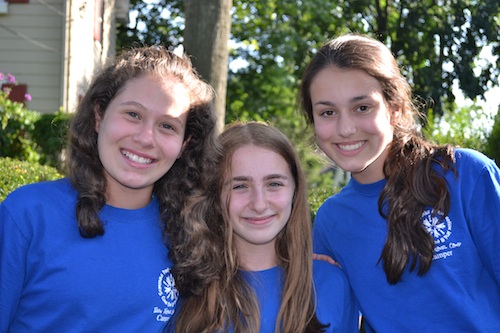 The Scarsdale Recreation Department announced today, May 19, that the Village’s popular summer camps will be cancelled this summer. The program is a hallmark of the Scarsdale experience and is attended by a wide range of Scarsdale kids and also offers summer employment as counselors to Scarsdale teens and college students. Camps Sagamore, Lenape, Wapetuck, Pathunke, Sports Camps, Soccer Camps and the Teen Travel program are all cancelled for the summer of 202.
The Scarsdale Recreation Department announced today, May 19, that the Village’s popular summer camps will be cancelled this summer. The program is a hallmark of the Scarsdale experience and is attended by a wide range of Scarsdale kids and also offers summer employment as counselors to Scarsdale teens and college students. Camps Sagamore, Lenape, Wapetuck, Pathunke, Sports Camps, Soccer Camps and the Teen Travel program are all cancelled for the summer of 202.
The memo says that the decision was made due to the restrictions imposed by New York State and the inability to get permits from the Westchester County Department of Health. It says, “That in combination with the amount of preparatory work and investment necessary to make the camps safe and successful, leaves us no alternative but to skip the 2020 summer camp season.”
The Village remains hopeful that they can offer weeklong camps in August.
The opening of the Scarsdale Pool, usually at Memorial Day, has been delayed until a tentative opening date of July 18. The fireworks spectacular scheduled for July 2 has also been cancelled.
The only good news is that 14 of the Village’s 26 tennis courts will open on Friday May 22, 2020. Special rules apply for usage: You must:
1) Have a tennis permit
2) Have a prior reservation and will you be limited to one hour time slot
3) Play singles – no doubles allowed
4) Arrive 10 minutes prior to your reservation
5) Check in with the attendant and show your permit
Where can you play? Two courts will be open at Brite Avenue and three of the five tennis courts will be open at Crossway. Five of the ten tennis courts will be open at the high school. At the Middle school three of the six courts will be open for play.
Also note, no lessons are permitted and the bathrooms will be closed. You can wear a glove and mask while playing, though gloves and masks are not required.
No decision has been made as yet about the Westchester Band concerts in Chase Park or the Recreation Department’s Parties in a Park.
Still prohibited are use of playgrounds throughout the Village, team sports, basketball and exercise stations. Public gatherings of any size are barred by the Governor’s Executive Order.
College Admissions in the Age of COVID: Reflections from SHS Director of Counseling Oren Iosepovici
- Details
- Written by: Joanne Wallenstein
- Hits: 3030
 This year is anything but usual. Education continues but outside of the school buildings, and the business of college admissions moves on, even though college campuses are closed. The SHS Counseling Department is at work, helping seniors decide where to go to school next year and advsising juniors on where to apply. The landscape has shifted dramatically in just a matter of weeks. Many questions have arisen: Will juniors be able to take standardized tests? Will colleges even be open in the fall? These are just a few of the issues on the minds of students and parents.
This year is anything but usual. Education continues but outside of the school buildings, and the business of college admissions moves on, even though college campuses are closed. The SHS Counseling Department is at work, helping seniors decide where to go to school next year and advsising juniors on where to apply. The landscape has shifted dramatically in just a matter of weeks. Many questions have arisen: Will juniors be able to take standardized tests? Will colleges even be open in the fall? These are just a few of the issues on the minds of students and parents.
Here are some observations from SHS Director of Counseling Oren Iosepovici on what he is seeing in the college admissions arena:
What, if any, differences have you noted about college admissions this year?
This national emergency has had an impact on every segment of society, and college admissions has been no exception. Much like our world has changed over the past two months, many of the assumptions that colleges and universities had are no longer valid.
International students that were due to arrive on their campus in September may no longer be able to. All across our nation, families that believed they could afford a specific institution have witnessed drastic changes to their employment and financial outlook. Institutions themselves have undergone a shock to their bottom line through lost revenue from unclaimed fees from students who are no longer on campus, a loss of endowment through the downturn of the stock market, and other economies they can usually count on. In the enrollment process, campus closures have prevented schools from marketing themselves to admitted students.
All these factors have combined to make this arguably the most challenging year for colleges in memory. We have heard from various institutions about the difficulties in predicting what their incoming class would look like, and this has obviously had an impact on the admission process. How that plays out in the coming weeks (and possibly months) will be interesting to follow and will ultimately answer the question of the true impact of this crisis on college admissions.
Are more students waitlisted than in past years and have you seen more students being admitted off wait-lists?
Given the incredible uncertainty colleges were facing, we did see colleges place a greater number of students on their "wait-list." Over the past few weeks, we have witnessed some schools admit students off their wait-lists quicker than in past years (we typically see movement after May 1st, but it did begin earlier this year). That said, while those trends are occurring at some institutions, many others have not yet shown a trend. Still, we do anticipate additional movement in the coming weeks.
What have you seen or read about the availability of financial aid?
We have seen no evidence that schools have reduced the amount of (need-based) financial aid offered to admitted students. Nevertheless, we do anticipate that the financial stress on institutions will have a future impact on their mission to provide access to students from a wide variety of economic backgrounds.
How have travel restrictions and the virus impacted college admissions and acceptances for foreign students?
While travel restrictions and the virus may not have impacted acceptances for foreign students, the pandemic will certainly have an impact on their ability to enroll. That is part of the reason that many schools increased the number of students they "wait-listed," as well as why we are seeing increased movement off that wait-list this year.
Due to the crisis, have more of your students been admitted to their first or top choice schools than in the past?
Past trends largely held during the Early Decision round (when students can essentially communicate to a school that is their first choice by applying under a binding plan), but that was well before things changed so dramatically. Starting in mid-March, however, we did see a slight uptick in surprising positive decisions, as well as an increase in the number of wait-list decisions. Some of those have now changed to acceptances. That said, we continue to emphasize to students, as we do every year, that one of the most important aspects of this process is to develop a well-balanced list of schools. When students apply to a balanced range of schools, we find that the vast majority are ultimately excited with their options, however respective schools "ranked" on their list of choices.
What are you hearing about ACT and SAT testing? Have the tests been cancelled? Can students take the tests online? Are more schools now saying standardized tests are not required?
Both the ACT and SAT cancelled their spring exams. Given the Governor's directive for schools in NY State to close through the end of the year, Scarsdale High School (and schools across our state and region) will not be able to offer the June exams as well. Both testing companies have indicated that additional testing dates will be offered in the coming months (as well as the possibility of offering online exams), and we will continue to update families as more information becomes available.
Prior to this crisis, approximately 1000 institutions were test-optional, meaning that they did not require standardized tests as part of their admission process. Over the past two months, dozens of additional schools have been added to this list, and it is likely that more institutions will consider the role of standardized tests in their process, especially if it becomes difficult for students to test during the summer and fall. On the SHS Counseling Department website, we offer a list of test-optional schools.
There is currently a move by students to make grading pass/fail at the high school for the final quarter of the year. How do you think that could impact college admissions for this year’s junior class?
Though I recognize that some students have raised a concern with respect to the grading policy at SHS, I want to take the opportunity to highlight the incredible thoughtfulness that our administration and faculty have taken in considering what is best for all our stakeholders. As always, we are communicating with individual students who may experience particular difficulties or hardships during this time, and we will continue to support those individuals. That said, I do not anticipate any changes to our final quarter grading policy, and ultimately our transcripts will look the same as they have in past years. Students' final grades in respective classes are the only grades that appear on a transcript, and those will continue to appear as letter grades.
What are you hearing about colleges opening in the fall?
We are hearing that things are still in flux. A recent reputable survey indicated that approximately 75% of colleges and universities are planning for "in-person" openings this fall, while many others are still considering a variety of options (only 2% were planning to be completely online). Still, I wouldn't be surprised to see these numbers change significantly. There is so much remaining uncertainty, and I would anticipate we will know more definitive plans later this spring or summer.
SHS PTA Scholarship Fund for College Needs Your Generosity
- Details
- Written by: Joanne Wallenstein
- Hits: 2648

To the Editor: The SHS PTA Scholarship Fund for College has a large number of applicants this year, but we find that we are below our annual goal for donations received. This reality will directly impact the number of grants we are able to make, as well as the amount we can give to each student.
Please help us make sure that the door to higher education is open to all our students. The Fund provides one-year grants to graduating SHS seniors who need financial assistance in order to attend college. We rely on donations from Scarsdale residents, as well as local businesses and organizations.
To impact a student starting college in the Fall, please consider making a donation by June 12, 2020. If you have already given this year, we thank you for your generosity and for your commitment to the young people in our community. Donations can be made to SHS PTA Scholarship Fund, PO Box 147H, Scarsdale, NY 10583 or online at http://www.scarsdaleschools.org/scholarshipfund.
Sincerely,
Karen Brew, Chair Emeritus
Seema Jaggi, Chair
SHS PTA Scholarship Fund for College
Fitness Fundraising Challenge on Saturday May 9
Give the gift of education: Please join the Scarsdale High School PTA Scholarship Fund for College to help SHS seniors who need financial assistance to pay for their first year of college by participating in a fitness/activity fundraising challenge on Saturday May 9.
Here's how it works:
Pick your favorite activity: running, walking, biking, playing a sport, baking, making music, or whatever you like to do, and at the same time contribute to an important cause that will help a Scarsdale graduate continue his or her education.
Donate any dollar amount for an activity that you do on Saturday, May 9th to the SHS PTA Scholarship Fund for College.
Follow this link to participate:
Or donate here directly:
The Scarsdale High School PTA Scholarship Fund for College provides grants to SHS seniors who wish to attend college but need assistance to pay for their first year. We expect student need to be significant this year due to the challenges of COVID-19; please know that your gift, whether large or small, will have a very real impact.
You can learn more about the SHS Scholarship Fund for College by following this link to the Scholarship Fund homepage.
Thank you in advance for your support!
Chalking It Up To Say Thanks
- Details
- Written by: Joanne Wallenstein
- Hits: 2393
 Kids and adults of all ages used their artistic talents on April 22 to thank the emergency workers who are helping the Village through the crisis. Residents chalked driveways and make window signs to show their appreciation for policemen, firefighters, EMS workers, Scarsdale’s water and sanitation departments and everyone at Village Hall who are keeping the Village safe and running in these difficult times.
Kids and adults of all ages used their artistic talents on April 22 to thank the emergency workers who are helping the Village through the crisis. Residents chalked driveways and make window signs to show their appreciation for policemen, firefighters, EMS workers, Scarsdale’s water and sanitation departments and everyone at Village Hall who are keeping the Village safe and running in these difficult times.
The event was conceived by Scarsdale’s Dara Gruenberg and made official by the Village of Scarsdale.
Take a look below at their work. And if you want to add your photo to the gallery, please email it to [email protected].










